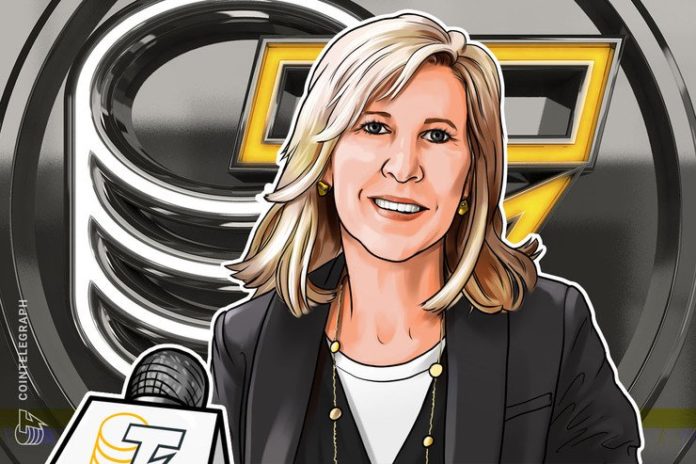[ad_1]
The Berkeley Blockchain Xcelerator — an incubator for early stage distributed ledger technology startups at the University of California, Berkeley — recently launched its spring cohort, which includes startups seeking to fight COVID-19, launch a cannabis-themed massively multiplayer online game and create a reverse auction platform for loans.
Cointelegraph spoke to Jocelyn Weber, the director of the Xcelerator, to find out more about the resources the program offers to startups, success stories from previous cohorts and advice for startups looking to launch in the crypto space.
Cointelegraph: Could you give an overview of the engagement and resources available to startups participating in the Xcelerator?
Jocelyn Weber: Our mission at Berkeley is to provide education and opportunity creation for our students and for the teams that join us and the Xcelerator.
So, we’re kind of a platform that serves two sides: the student community, which ranges from undergraduate to Ph.D. and faculty level; and then on the other side of the platform are the startups, which can come to us to find blockchain talent funding, entrepreneurial guidance partners and even users for their products.
On campus, we have blockchain researchers, the Blockchain at Berkeley student group and a variety of blockchain courses. We have workshops on campus from the Simons Institute for the Theory of Computing, which is led by Shafi Goldwasser, who is the co-inventor of zero-knowledge proofs.
We have an ecosystem calendar now on the Xcelerator website that shows you kind of all the activity that’s taking place on a month-to-month basis. And a lot of that activity is open to the community and anyone can join.
We invite our startups to engage in these activities with us on our campus, and we mix in people from our network, which includes venture firms and corporates such as Samsung, Next and Oracle.
CT: Can you give some more examples of the venture capital firms and crypto companies that are in UC Berkeley’s network?
JW: We’ve had Harmony, Near, Cosmos, Affinity and Polkadot all speak on campus over the last year and a half. We also involve exchanges, regulatory and legal advisors, and a host of mentors. We also have a Blockchain at Berkeley student fellowship program that pairs some of our top blockchain Berkeley students with each Xcelerator team.
“To stimulate the interaction among all these stakeholders, we invite them to our open monthly meetups, to speak on panels or in speaker sessions and, when appropriate, to mentor directly with the teams or hold office hours.”
Our accelerator also draws from our Berkeley Entrepreneurs Association network to teach a range of topics, including customer discovery, marketing for startups, design thinking and how to best interact with VCs in Silicon Valley. We’ve also had close to eight VC panels or VC speaking sessions. Those have included Blockchain Capital, Monday Capital, Future Perfect Ventures, Coinbase Ventures, Robinhood Crypto and Dekrypt Capital.
CT: When assessing applications from startups, what are some of the things you look for when identifying teams/projects that are of high quality or have strong potential?
JW: We look a lot at “founder, problem, fit”: do the founders really have the leadership in their team with the experience, the blockchain background and the network to win in their market or use case?
We also want to see that it’s not technology for technology’s sake, that it really is a viable business. And we like to see some customer market validation data. Although it’s still early in the blockchain space, many of our teams have had a chance to go out and get early adopter customers. So we like to see that in the teams that we select.
We also receive recommendations from some of the projects that we are in touch with. Near, Ripple, Stellar, Parity and Polkadot have all recommended projects to us in the past, which is helpful because they certainly know in their own ecosystems who is doing good work.
CT: What are some of the biggest challenges that the Xcelerator has found blockchain startups frequently encounter?
JW: Market timing for broader adoption is a challenge that the entire blockchain industry is facing. Certainly, our teams see that. They have these early adopters and early traction, and what we’re waiting for is the broader market timing.
Also, in some cases, the customers’ understanding of the technology. Sometimes you have blockchain being applied to a legacy industry that’s not familiar with the technology, and there is a little bit of education that needs to take place by the startup for these legacy industries so that they can understand the benefits of blockchain. So, you see a lot of customer education also being done by our startups.
CT: Can you share some success stories from previous cohorts?
JW: Leaf Global Fintech, a global virtual bank that helps refugees and migrants safely store and transport money across borders, was in our fall batch. They have launched and gained traction. They’ve also received a $225,000 phase one non-dilutive grant from the National Science Foundation in the United States. We were excited that they were able to raise that non-dilutive support.
PlayTable was in our first batch, and they raised over $3 million with a new token issuance that included investors like VeChain and Block Crafters. We also had Bitmark from our first batch raise $3 million dollars.
CT: Have many former cohort members been able to raise capital after participating in the Xcelerator?
JW: From our first batch, we had 12 teams in total. Three were student-led teams that primarily went on with education. We had one team that had done an initial coin offering and didn’t need additional funding, and eight went on to seek additional capital. Five of the eight have been successful in raising new capital. I hope that two more will raise in the next few months, as they were pretty far along in the fundraising process just before COVID-19 affected the U.S. and Europe.
From the second batch, there was RIPchain, or rest-in-peace chain. They are putting wills and trusts on the blockchain. A very young team of 17-year-old twins doing some great work. I expect we’ll hear more from them.
Many of our other teams from that fall batch are still working on fundraising, as we ended in mid-December. With COVID-19, we will see some slowing of that progress, but I expect that a good number of them will go on to raise over the next 10 months.
Finally, another key result that we’ve noticed is the hiring activity taking place. A new number of our UC Berkeley students at all levels are being hired by our startups, as well as companies that have sponsored events or spoken on panels. We’re really thrilled to see this opportunity creation through our network.
CT: What lessons has the Xcelerator learned since the first cohort, and what adjustments have been made to the program?
JW: It’s been just over a year, but we have made some adjustments. We were trying to follow semester boundaries, and that put us with a demo day in mid-December at the end of last year, which we learned was not an optimal time for venture capital engagement. So, we are changing that, and that’s why we’re starting in April and ending around October for our spring batch.
“We’ve also learned that involving the blockchain VC community on panels and speaking sessions on campus is really helpful to understand their perspectives, educate ourselves when we’re selecting teams, and also to educate our teams on where VCs are most interested and what their views are.”
So, it’s helpful to have that dialogue between the VC community, especially the blockchain VC community, and our teams.
CT: Do you have any predictions for the blockchain sector in the coming years?
JW: We think security in the decentralized finance space needs to be addressed for broader adoption. We also saw a very high volume of gaming from ghost applications in the current batch of applications.
“We are excited about the gaming space. We have four teams in the current batch working on gaming-related solutions or nonfungible tokens, and we think this is a great opportunity for broader consumer adoption of crypto and NFTs.”
And finally, like most of the industry today, we see that activity will move toward application-specific blockchains with architectures that are best suited for particular use cases. And then 12 to 18 months after many of these new layer one chains launch their mainnet, it will be very interesting to see what works well.
CT: What advice would you give to early startups or entrepreneurs who are thinking about building in the blockchain and crypto industries?
JW: I’d give the typical startup or new venture considerations: Ensure you have a scalable business model through the customer discovery process before you do extensive product development. Understand your market and the dynamics in that market extremely well.
And build a network of potential investors, advisors, mentors and partners as early as possible in the process. We feel the network that teams establish is really key to their success.
“If you’re a decentralized application, stay layer-one agnostic or flexible as long as you can, as some layer ones may end up being more successful or more appropriate for your solution in the long run.”
This interview was shortened and slightly edited for clarity.
[ad_2]










